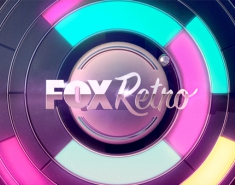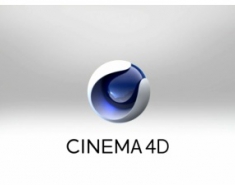Red Bull Racing Comes to South Korea – A Look Behind the Scenes
For the first time in history, Formula 1 racing came to South Korea; in 2010, the brand new circuit in Mokp'o saw its first Grand Prix.Designed by Hermann Tilke it is the world’s first racetrack that is built in a dual layout of a shorter racetrack for domestic races plus an extension for Formula 1 races. It even has a double set of pit lanes and paddocks.
To introduce this new track to a worldwide television and Internet audience, Peter Clausen Film and Aixsponza joined forces again to produce an entertaining animation packed with information about the circuit. Because the track in South Korea was still under construction when production was started all Aixsponza had as reference material was the architect’s plans and a few photographs of partly-finished track buildings. Hence, asset creation for this project took a bit more preparation and research than usual because more reference material had to be located. The exterior design of buildings (e.g. materials used on facades, decorative patterns, etc.) in particular had to be researched. The team saw this as a positive challenge and enjoyed the creative freedom it offered to design the buildings’ facades for the animation. The additional time that was needed for research had to be saved in other areas of asset creation. Fortunately, the car and driver elements had already been created: The production team had completed previous Formula 1 projects for Red Bull in the past and were able to re-use many of these elements. Red Bull had provided Aixsponza with a CAD model of the car that had then been cleaned up and exported as polygonal meshes to be used in production. Since the actual cars had not been modified, we were able to re-use the already textured models from those previous animations.

While some elements only had to be touched up, the majority of the elements in the animation had to be built from scratch. This included all track buildings, the skyscraper and a fully occupied yacht harbor dubbed “The Marina”. A lot of attention was given to the marina because it would be included in several close-ups. The marina turned out to be the greatest single asset in the animation, weighing in at about 4 million polygons and a texture load of around 2 GB!
Another major challenge was adding trees throughout the entire scene. The architect’s plans for the area called for a beautiful scenery loaded with green parks, leafy boulevards and densely wooded hills around it. For the shots done in CINEMA 4D we created a forest asset that let the artists simply drop geometry in that was to be covered with trees. It also had controls for density of the trees, amount of “hero trees“ (trees that are a bit taller than the rest) and how many clearances in the forest.
On the lighting side a lot depended on the right sky panorama. After doing a few tests with different sunset panoramas we ended up painting our own, combining a few commercially available panoramas into one that we liked. By doing a few side-by-side comparisons we were quickly able to achieve the lighting mood that we were after. In the end we rendered the entire setting in a sunset mood with strong yellow-orange-red colors and long shadows for interesting patterns on an otherwise rather bleak racetrack.
While all assets were being built, a second team was working on the animatics. The basic storyline was quickly defined as it simply consisted of following the track, explaining the characteristics of all corners and high-speed stretches. We also wanted to have one of the drivers to do a power slide on the most dangerous part of the track. This was done to highlight the difficulties of the track as well as to introduce some more action into the animation. After feedback from both Mark Webber and Sebastian Vettel, we decided on the corner in which skidding was most likely to happen. Through various iterations the final animatic was rather quickly derived. Here our long-standing relationship with Peter Clausen Film and Red Bull proved to be invaluable as there was not much experimenting required. Everybody already knew what the other parties expected and liked, so feedback was mostly positive. For presentation purposes we rendered the animatic in advanced shading mode. This enabled us to judge light and shadow interaction and see how reflections on the car behave. A nice looking animatic is also good to have when doing client presentations as it helps tremendously to sell an animation. Once the animatic had been completed and approved, the refined secondary animations of the car were done.
After both parts of pre-production (animatic and assets) where finished we entered the production phase. In this phase every artist is assigned a sequence of shots for which he or she is responsible. What is left to do is the “dressing“ of the scene, i.e. positioning all the racetrack furniture. There was no master asset for the entire track, city or environment. Instead, every scene was populated on a shot-based approach to get the most out of it.
Once the set dressing was finished and the lighting was adjusted and checked, the scene was sent to the render farm with preview settings. These first quick renderings of shots were then shown to the Creative Director for feedback. We had good experiences with writing feedback directly on top of the render output. These “annotated renderings” go back to the artist who worked on the shot for refinement and final rendering. All the accumulated knowledge gathered from past Red Bull projects helped us to streamline our production pipeline and workflow. This kept revisions and faulty renderings to a minimum, which in turn resulted in a very smooth rendering phase without too many technical problems. The entire “set dressing and 3d rendering process” took only a little over two weeks for three minutes of HD-resolution animation.
Google Docs was used to manage the production process. Using an online-based database solution offered us the possibility to check the project’s status from any location and also gave us simultaneous access to files. This meant that everybody could update the status of his or her shots and keep the management table up-to-date. All scenes are rendered in Vray with Global Illumination using the brute force/light cache method. We did not bake the light cache solution but kept it live as it sped up the workflow. As the light cache solution is quite fast to create, even with high quality settings for flicker-free non-baked renderings, it didn't impact render times much.
We did not render channel-based multi-passes like diffuse, reflection, shadow. What we did was render spatial multi-passes. For example, we had a separate pass for the car, racetrack, the city, mountains and the sky. A special pass was done for wheels due to the fact that we use a proprietary plug-in to handle rotational motion blur. It only blurs the rotational component of the movement and keeps the translation out of the blur. This helped us in compositing to color grade those passes separately and it also made it easier to render fixes. Compositing was done in After Effects, which allowed us to use a single compositing file. This kept us from having to go back-and-forth between compositing and editing software. During the animatic phase the edit was done in FinalCut Pro. Once everything was approved and final we brought it into After Effects wo we could eliminate one additional step.
The main task in compositing was bringing all the rendered layers together and color matching matching them. With the help of z-channels, motion vectors, and various rendered mattes, things like atmospheric haze, motion blur and heat ripples were created in post. All smoke effects were simulated in TurbulenceFD, which is a fluid simulation plug-in for CINEMA 4D. They were then rendered as separate layers and composed on top in After Effects. Finally, a general color grading was put on top of the footage as well as more 2D effects like glows, lens flares, optical distortions and film grain. For final delivery, QuickTime ProRes and XDCam files were created with three different audio versions. The audio commentary was done by Marc Webber in English and Sebastian Vettel in English and German.
The finished animation was then made available for international television stations to use in their Grand Prix coverage as well as for use as imbedded video online. “Red Bull Racing comes to South Korea“ enjoyed a successful worldwide release and successfully reached its target audiences.
Credits
Client
Red Bull Media House GmbH
Production Company
Peter Clausen Film & TV Produktionsgesellschaft mbH, Munich
Director & Producer
Peter Clausen
Line Producer
Cecilia Trück
Animation Studio
AixSponza GmbH














 FOX Retro - Magic Pinball!
FOX Retro - Magic Pinball!








